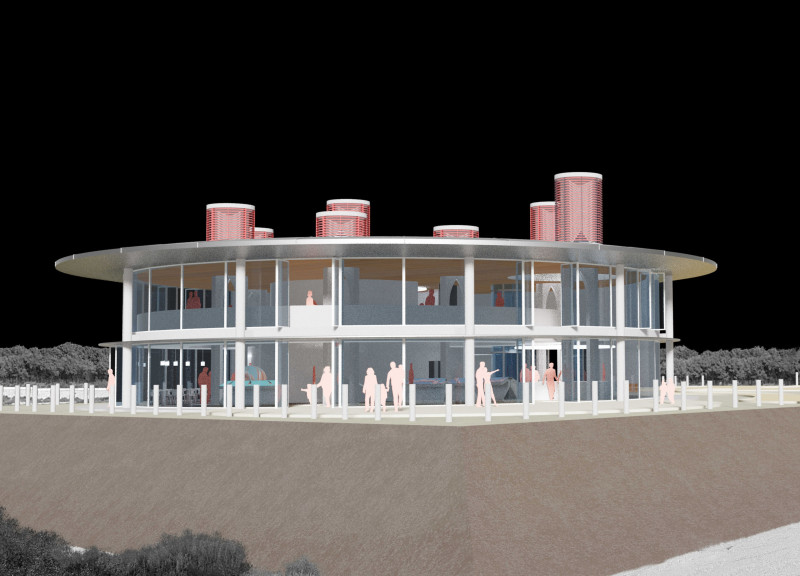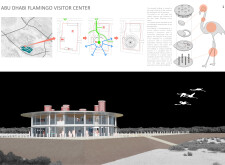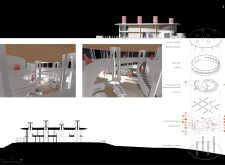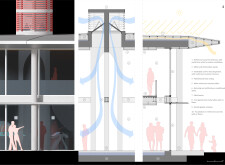5 key facts about this project
In terms of design, the Abu Dhabi Flamingo Visitor Center adopts a circular layout that facilitates movement and encourages exploration. This form is symbolic of unity and inclusiveness, characteristics that the project aims to promote within the community. The plan emphasizes seamless connectivity between indoor and outdoor spaces, allowing visitors to transition smoothly from exhibits to observational areas with views of the lagoon. This thoughtful spatial organization reflects the project's commitment to enhancing the visitor experience while providing educational value.
The materials selected for the building contribute significantly to its sustainability objectives. Reinforced concrete forms the backbone of the structure, ensuring stability in the desert climate. Expansive glass panels allow for ample natural light, creating vibrant interior spaces that connect occupants with the outdoor environment. The roof incorporates photovoltaic panels that harness solar energy, making the center energy-efficient and reinforcing its ecological message. Additionally, the use of plasterboard and steel enhances both aesthetic appeal and structural performance.
Key components of the visitor center include interactive exhibition spaces designed to engage visitors of all ages. These spaces are equipped to host various educational programs and workshops that inform guests about the ecological roles of flamingos and other wildlife in the area. Refreshment areas encourage social interaction, allowing guests to gather and discuss their experiences. Administrative offices support the operational needs of the center, ensuring that educational programs are delivered effectively and efficiently.
Unique design approaches characterize the Abu Dhabi Flamingo Visitor Center. One notable aspect is its integration of natural ventilation strategies, utilizing a chimney effect to promote air circulation while minimizing reliance on mechanical systems. This consideration for environmental impact is further highlighted by the rainwater harvesting systems designed to support landscaping and water needs within the center. The overall architectural design demonstrates a respect for the surrounding environment and an intention to inspire visitors to engage with the natural world responsibly.
The visitor center’s significance extends beyond its functional roles. It serves as a model for future architectural projects within sensitive ecological areas, illustrating how thoughtful design can promote conservation and community involvement. By prioritizing sustainability and educational outreach, the Abu Dhabi Flamingo Visitor Center exemplifies an architecture that resonates with its surroundings and engages the public in meaningful ways.
For those interested in exploring this project further, detailed architectural plans, sections, and design ideas provide deeper insights into its conception and execution. Engaging with these elements can enhance appreciation for the architectural approaches taken and the intended impact on both visitors and the environment.


























